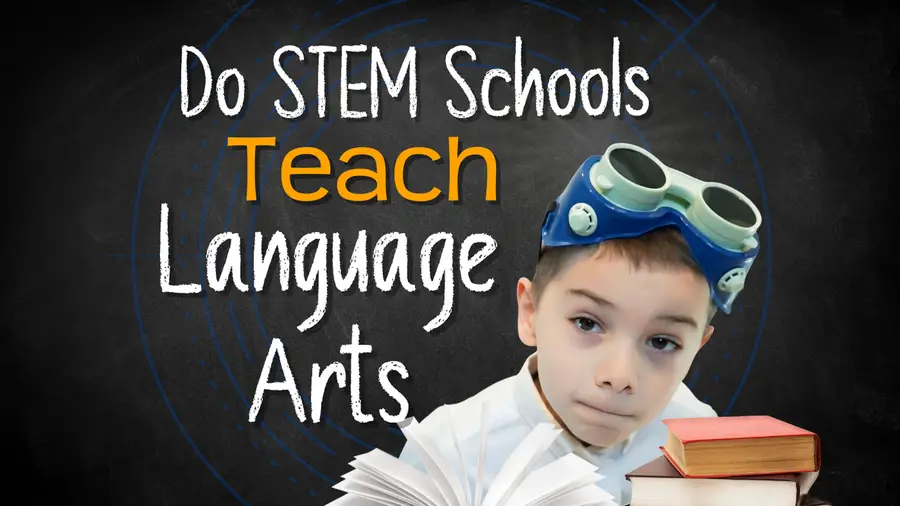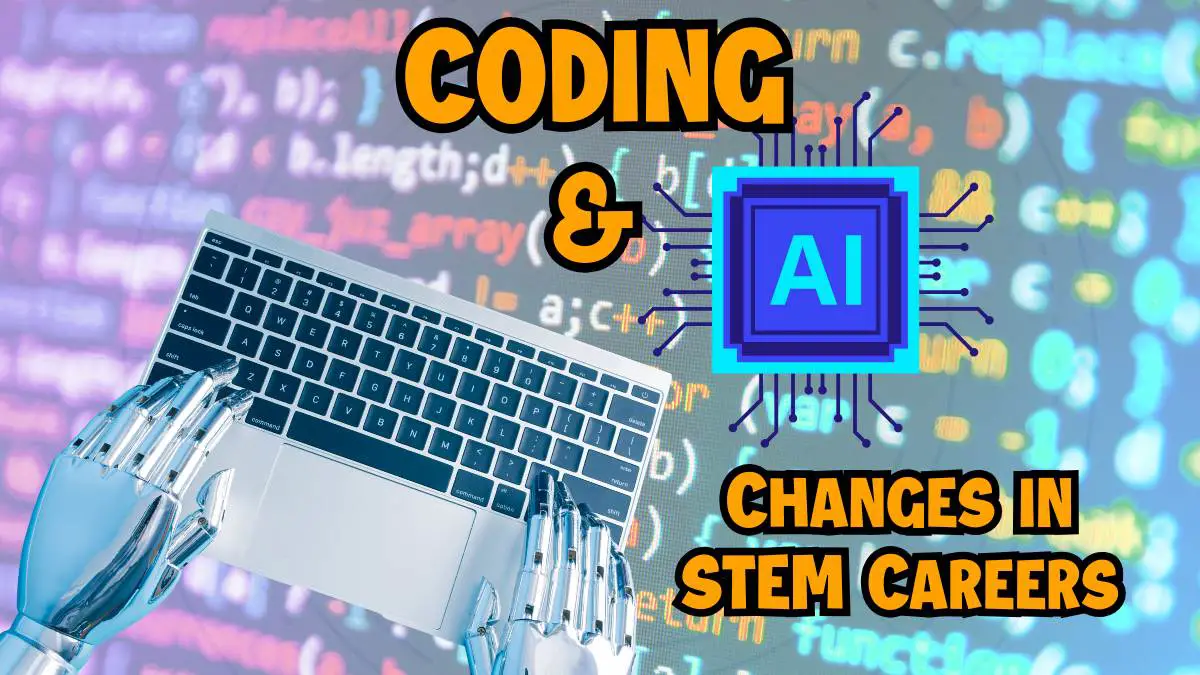STEM (Science, Technology, Engineering, and Mathematics) Schools have been growing in global popularity due to the increasing demand for STEM graduates in our tech-driven world. But many parents are concerned that encouraging their children to focus on STEM curriculums means that other critical, creative pursuits could be put on the back burner. For example, do STEM schools teach English? We have the answer.
While language arts are not traditionally part of STEM education, there has been a recognition among teachers and professionals that STEM schools need to develop creative, collaborative, and communicative skills to truly thrive in the modern workplace.
Initially, STEM schools placed more emphasis on the STEM subjects, applying Science, Technology, Engineering, and Mathematics in contexts that help make connections between what’s happening in the classroom to experiences of the real world. While this does involve some level of creative thinking, Language Arts (and art/music) are not part of the curriculum.
The concern is, without fostering the creative side of the brain, students won’t be able to comprehensively utilize their STEM-related skills in the workplace due to shortcomings in creativity, and the ability to sketch, conceptualize and communicate any ideas.
STEM programs are growing and evolving. Let’s explore!
Are English Language Arts Part of STEM Schools’ Curricula?
STEM schools tend to gravitate towards an approach to learning that uses Science, Technology, Engineering, and Math exclusively as access points for theoretical and practical learning. However, there are some that offer more creativity-driven modules, such as ELA (English Language Arts).
For example, an ELA module could focus on writing and language skills to report on the progress of various science projects and experiments that they are completing and conducting. Students may also be instructed on how to present their findings with a slide show or with other visual cues.
One Language Arts teacher tells her STEM students, “In industry, it doesn’t matter how impressive your idea is if you can’t communicate it intelligently to the right audience.”
I’ve seen this happen myself. I’ve worked with a lot of people in my career(s), and think of one particular colleague with a brilliant mind and ideas ahead of his time. Because he wasn’t an effective communicator, he’d constantly get in his own way and tank opportunities before they got off the ground. Well on in has career, he’s still struggling.
While there has been a surge in demand for jobs in the STEM fields in recent years (17% growth, compared to 9.8% for jobs in non-STEM fields), employers and STEM experts alike all agree that the ability to communicate, think critically, and harness creative energy plays a huge role in following a successful career in STEM. That’s what separates someone like Elon Musk from other engineers and IT wizards; his creative process, coming up with ideas to create solutions to a particular problem or problems.
More and more STEM schools are starting to add arts modules to their courses just to balance out the STEM skills with a creative-focused education that can inspire students to become truly remarkable one day.
What Is STEM Education & Why Is It Important?
With jobs in STEM fields growing three times as much as their non-STEM counterparts, the US will need to produce at least a million more jobs by 2028. However, there are not enough STEM graduates to fill all of those jobs. So, if you want to all but guarantee your child a job one day, it would be a good idea to offer them a STEM-focused education.
STEM schools take a practical approach to learning, and they are geared towards educating workers for the 21st Century. A STEM school uses different practices to conventional education as we know it. For example, children are often taught through electronic devices like laptops and tablets; they also get to focus on one particular experiment at a time and are taught to manage their time.
Furthermore, STEM schools often collaborate with industry specialists and businesses, opening up opportunities for internships, mentor programs, vocational training, and guest speeches at various school events.
The great part about STEM schools is that they allow children to work at their own pace. A teacher may have a webpage where they upload course frameworks, exercises, and lesson material for children who want to move ahead or go over a lesson again. This way, your children are able to develop at a suitable, curated pace to help them thrive according to their aptitudes.
STEM schools offer a holistic approach to education that gives students everything they need to thrive in the modern workplace.
The Next Step: STEAM Education
While a curriculum that allows children to work at their own pace and a streamlined approach to creating jobs in IT, engineering, physics, etc., what could be the downside to receiving a STEM education?
Some detractors worry that students may be missing out on a number of other key skills necessary not only for the workplace but also in other aspects of life. Elective subjects such as a foreign language or basic philosophy module could help foster creativity and broaden their perspectives of the world.
Furthermore, because girls tend to show less interest in STEM subjects, there is often a great deal of criticism leveled at STEM schools for failing to find ways to encourage young girls to pursue STEM careers.
One study from Girls Who Code shows that while 74% of middle school girls express an interest in STEM, less than .4% choose a major like computer science in high school. Gender roles should not exist in the classroom, and we must find ways to encourage girls pursue their interests in science.
Additional arts modules could help rectify these issues, so STEM schools are fast becoming STEAM schools (Science, Technology, Engineering, Arts, and Mathematics).
A STEAM education brings the benefits of building skills and boosting creativity, confidence, and new ways to approach the problem-solving, collaboration, resilience, ingenuity, adaption, and teamwork building we already see in STEM. It further encourages experimentation and knowledge application while utilizing modern technologies that have become a staple of the workplace.
A STEAM education truly offers children a well-rounded education that remains focused on giving them opportunities in the future economy by adding Arts to the mix.
Related Post: What is the Difference Between STEM and STEAM?
STEAM Careers
You may find yourself wondering what kinds of careers you can expect your children to pursue should they attend a STE(A)M school. So, here are a few career paths that your children might choose to pursue as they grow and adapt to their new learning environment:
- Mechanical & Civil Engineer
- Molecular Biologist
- Architect
- Website/App Designer
- Modern Urban Planner
- Orthopedic Technologist
- Biomedical Engineer
- Product Designer
- Animator
Should You Send Your Child To A STEM School?
So the only question left to ask yourself is, “should I send my child to a STEM (or STEAM) school?”
The definitive answer is yes. The future workplace will look completely different from what it is today, even more different than what our workplaces today look like compared to 20 years ago. Indeed, the jobs of tomorrow may very well not exist today.
Think about what an office may have looked like without cellphones and laptops, let alone 3D printers, AI algorithms, and some of the great cutting edge technologies available at our fingertips today… now try to imagine how radically different the office of the future will be.
Beyond that, countless jobs that exist today simply will not exist in the future due to automation. The best way for you, as a parent, to ensure that your children even have jobs at all is to make sure that they are at the forefront of tech development, running and designing the new incredible breakthrough technologies that will change the world as we know it by the time your children enter the workplace.
For further reading, don’t miss our parent’s essential guide to STEM.




